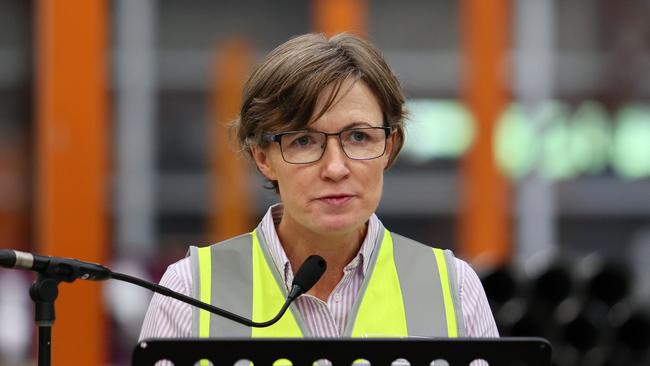BlueScope says NSW lost out to WA on big green iron investment
BlueScope Steel wanted to build a major green iron pilot plant at Port Kembla but lost out to WA after the iron-ore rich state put up a $75m assistance package.

BlueScope Steel wanted to build a major green iron pilot plant at Port Kembla but lost out to WA after the iron-ore rich state put up a $75m assistance package.
Australia’s biggest steelmaker and biggest iron ore miners — Rio Tinto and BHP — settled on a site next door to BHP’s mothballed Kwinana nickel refinery on the back of taxpayer-funded support in WA.
Woodside Energy has joined the trio in a partnership aimed at accelerating decarbonisation in steelmaking and will supply gas and potentially hydrogen to the ironmaking electric smelting furnace (ESF) earmarked for the site.
The WA cash splash looks set to cost NSW hundreds of jobs and an investment BlueScope chief executive of Australian steel products Tania Archibald said would stretch to “hundreds of millions of dollars”.
Ms Archibald said the steelmaker’s first preference for the pilot plant was Port Kembla, but denied the move to WA spelled trouble for the NSW operations that produce 3 million tonnes of steel a year using coal to fire blast furnaces.
“We are very grateful for the very significant state support package that we’ve received from the WA government, but I do want to be at pains to say this does not mean the end of steelmaking at Port Kembla,” she said.
“It’s critical to understand that this is a technology project which provides the key to enable potential DRI (direct reduction iron) production at Port Kembla over time.”
Ms Archibald said BlueScope and its partners talked to the NSW and South Australian governments about support for the project, but WA prevailed in part because of the state is home to the BHP and Rio’s iron ore operations and with Perth-headquartered Woodside joining the project.
It is understood one of the barriers to Port Kembla being selected was doubts about gas supply and pricing.
BlueScope said in October failure to boost gas supply and make prices globally competitive were a barrier to its efforts to reduce carbon emissions.
The pilot plant collaboration is part of efforts to prove WA iron ore — the lion’s share of world supply — can be used to make green iron and then green steel.
Landing the project at Kwinana was important to both the WA and federal governments as they prepare for elections in the next few months.
There have been more than 1500 job losses in Kwinana, which takes in federal resources minister Madeleine King’s seat of Brand, announced this year, with BHP shutting down its nickel operations and Alcoa moving to close one of its three alumina refineries in WA.
The pilot plant will have capacity to produce up to 40,000 tonnes of molten iron a year and is expected to be built by 2028 pending a final investment decision by the four partner companies.
The Albanese government has suggested the project, first unveiled as a collaboration between BlueScope, Rio and BHP at Port Kembla in February, could qualify for backing through the $15bn National Reconstruction Fund.
Ms Archibald said the project was about addressing a major challenge for iron ore from WA’s Pilbara as the world looked to reduce emissions in steelmaking.
She said the Pilbara ores that provided the backbone of the Australian economy were low to medium grade and did not work well in the DRI process gaining favour as a means to cut emissions in steelmaking.
“The time frame on this project is quite significant. We’re aiming to have it built and operation by 2028. We probably then need to run it for at least three or four years while we optimise the feed materials and operating measures,” she said.
Rio iron ore boss Simon Trott said it might be decade before Australia was producing green iron on a large scale with the timetable dependent on technology breakthroughs.
“We’re working with customers currently optimising their existing operations, which for us is predominantly blast furnace. Pilbara ores into low carbon emissions steel will require some technology change, and that takes time both to identify and then to scale that up. You’re going to see that happen over many years,” he said.
A recent report commissioned by the Chamber of Minerals and Energy in WA estimated investments totalling $37.5bn were required by 2030 to produce an initial 4.5 million tonnes of green iron using hydrogen.


To join the conversation, please log in. Don't have an account? Register
Join the conversation, you are commenting as Logout